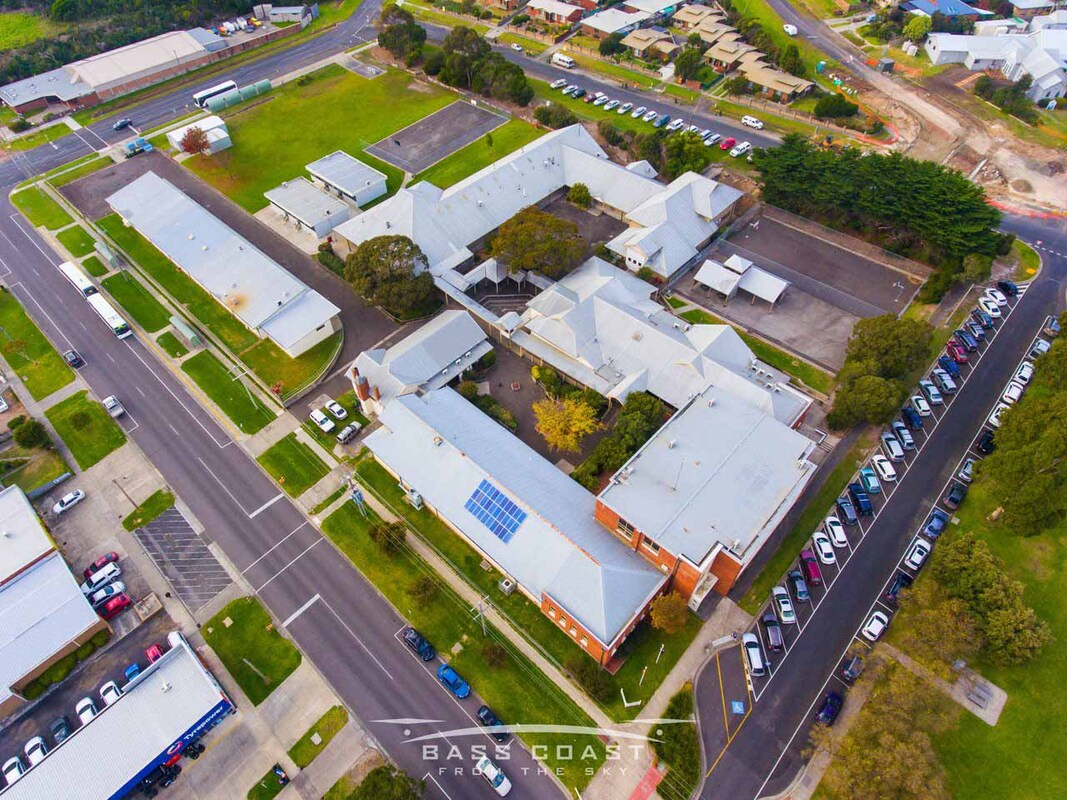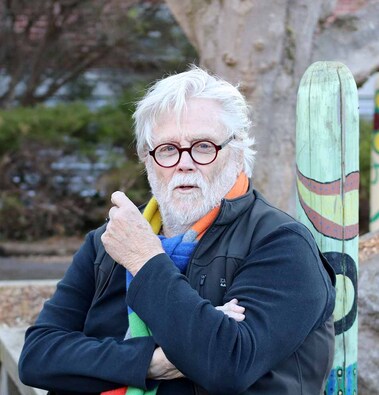 John Mutsaers: "Culturally this is probably the most valuable site in Gippsland now." Photos: Geoff Ellis
John Mutsaers: "Culturally this is probably the most valuable site in Gippsland now." Photos: Geoff Ellis
ON A freezing Saturday afternoon, John Mutsaers is showing us some of his favourite features of the old Wonthaggi High School.
Sitting in one of the school courtyards, he can envisage the artists in these spaces, and visitors relaxing between exhibitions and performances. Outdoor performances in summer, perhaps. He’s been told there’s a commercial kitchen. There’s plenty of room for a café and outdoor seating, shaded in summer, sheltered in winter.
Those old portable classrooms, scattered around the edge of the campus? Artists’ studios. “Artists need spaces where it doesn’t matter if they spill the paint.”
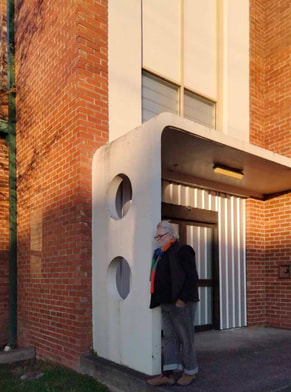
In 2021, the council’s arts and culture advisory committee, of which he is a member, released a detailed and ambitious discussion paper plan, A Creative Arts and Cultural Precinct for Wonthaggi. The paper argued that this site presented a once-in-a-lifetime opportunity to create a civic heart for the rapidly growing town and make it a destination for locals and visitors alike.
The report was tabled at a council meeting then disappeared into the ether.
After the school moved out, the vandals predictably moved in until the buildings were boarded up. Now they seem secure but the site is still open. Some enterprising gardeners have been at work nicking the sleepers holding the garden beds in place. More pilfering seems inevitable.
But five years after the State Government announced the site would be handed over to the council for a cultural precinct once the school moved, the buildings are still boarded up and the only sign of life is regular mowing.
A cultural precinct has dropped off the advocacy list and the council and government are at loggerheads over ownership and associated repair costs.
Operating within a rate cap, and conscious that may of its ratepayers are struggling, the council is understandably wary of the cost of renovating and/or rebuilding.
According to the council website, the council is carrying out detailed “pre-feasibility studies” on building and structural integrity, heritage, and safety: “This will identify short-, medium- and long-term costs plus risks associated with taking on the site, to ensure a full understanding of the costs involved in managing the site are understood. A decision to transfer management of the site will be made after the completion of all pre-feasibility studies.” The report is due to be completed in July.
In response to a query from the Post, a council spokesperson stated that since the site belonged to the State Government, the council was unable to carry out refurbishments.
“The structure has also suffered a lack of investment, even when in operation as a school, which has catalysed since closure into disrepair.
“To demolish the buildings alone and restore the site to grass would cost approximately $1.5 million. Restoration of the existing buildings would cost many millions of dollars. This would exhaust Council’s budget placing extreme pressure on essential community services.
“Council has heard our community and continuously advocates for sufficient funding for any site restoration. Good governance must be followed for the benefit of our community. This includes adequate risk assessment into the feasibility of developing the site, and all future costs.
“Council is open to partnering with the State Government when all essential funding needs can be met, so we look forward to starting these discussions soon.”
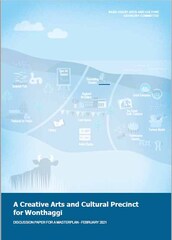
“I don’t think it is a priority as council have focused their spending not on housing or this unique opportunity but on master-planning a dinosaur trail and buying land for its garden.
“Around four years ago they came and asked for $1 million to clean up the site. I was very clear that they should take on the site, accept it very very graciously, find the funds to clean it up because ultimately anything they wanted to put on the site they would be coming to State Government for significant funding – and it would be significant.
“In fact, a few years ago, I said hurry up and get it together as this would be an amazing project for my future budget bids, even an election commitment if it is master-planned and costed – this was a discussion before Covid.”
Ms Crugnale said previous councils and the community had aspired to take on the site for many years. “It is a community asset, after all, and why wouldn’t you take it on? Library, art gallery, cultural and performing arts, community centre and spaces, studios, start up incubators, Country University Centre – the potential is amazing.
“Imagine having a cinema and performing arts centre that are not a shared space (as they currently are) and what that can do in terms of programming year round! Imagine having the Robert Smith Collection on exhibition amongst so much more. Imagine having a library that they are not paying rent for.”
She hopes the council’s report will recommend proceeding with the transfer.
And if it doesn’t? It’s likely to be offered for other community uses, perhaps as a TAFE or university campus.
“After years of neglect by the Victorian Government, the local member is now seeking to pass on this state-owned liability to Bass Coast ratepayers.
“A proper risk assessment and community consultation is essential before any decisions on ownership can be made. This site remains Crown Land also, so potential uses for Council are limited.”
Cr Whelan said the council was currently reviewing the condition of the site, with investigations already revealing buildings in disrepair after many years of neglect.
“Passing irreparable buildings onto Council is cost shifting by the state government – when they should take responsibility for maintaining their assets. The site should not be dumped on Council.”
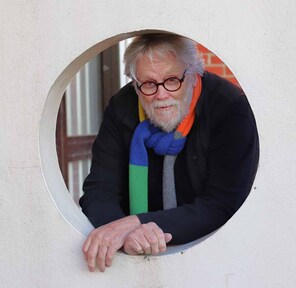 John Mutsaers: “Fix the leaks, give it a coat of paint and let’s hold some events ... Let's just try it."
John Mutsaers: “Fix the leaks, give it a coat of paint and let’s hold some events ... Let's just try it." Razing the McBride site might turn out to be cheaper than renovating, but would that be acceptable to DEECA - or to the community?
John Mutsaers hates the idea that the council might simply raze the site and send the buildings to landfill. He says some of the buildings have cultural and historical value and he hopes they would be incorporated in some way in any new development.
Nor does he believe we need to spend tens of millions to make it usable. “Fix the leaks,” he says, “give it a coat of paint and let’s start holding some events.
“If they want an art exhibition to try it out I’ll bring some highly regarded artists here. We’ve got to do something to make a claim. Let’s just try it!
“Culturally this is probably the most valuable site in Gippsland now. While established towns like Ballarat, Bendigo, Albury have beautiful galleries set in parklands, it’s extremely rare for an established town like Wonthaggi to have such a site available in the CBD.”
Another member of the arts and advisory committee, Ross Farnell, a cultural consultant, acknowledges there are competing interests for the site around housing and social enterprises.
“And that’s as it should be. It’s a big site and I think mixed use sites are more effective than single use. All we know is that this is a once in a generation opportunity to do something very exciting right in the heart of Wonthaggi."
